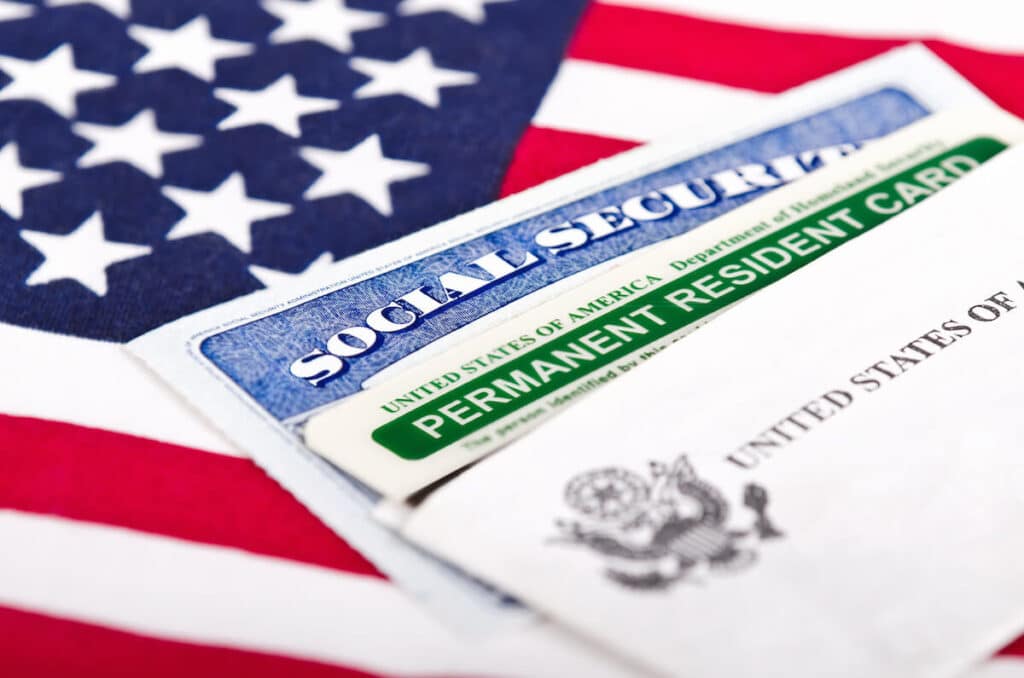One of the best parts of becoming a permanent resident in the U.S. is being able to plan for a future with your family and loved ones. Permanent resident status means you can live and work in the U.S. as long as your green card is valid. But what does it mean if you have a conditional green card?
In most cases, you can convert your conditional green card into a permanent one as long as you continue to meet the requirements of your U.S. visa application after two years. To learn what you need to know about conditional green cards in the U.S. and how to apply for a Removal of Conditions (ROC) on your permanent resident status, keep reading this Remitly guide.
What is a conditional green card?
A green card, also called a permanent resident card, is a photo ID showing your immigration status.
Permanent green cards are valid for 10 years before expiration, but conditional green cards are only valid for two years.
The U.S. Citizenship and Immigration Services (USCIS) issues green cards to foreign nationals who have become lawful permanent residents of the U.S. through an immigrant visa application process.
Conditional permanent residents have the same rights as other permanent residents and can freely enter and exit the U.S. until the expiration date of their green card. At that point, they can apply to adjust their status and obtain a 10-year green card.
Who gets a conditional green card?

Two categories of permanent residents may receive conditional green cards under U.S. immigration law: spouses of American residents and investors.
In 1986, Congress passed the Immigration Reform and Control Act (IRCA), which introduced conditional permanent resident status to reduce marriage fraud.
Conditional permanent resident status also applies to investors and entrepreneurs under the EB-5 Immigrant Investor Program.
Two types of conditional green cards
Marriage-based green cards
If you’ve applied for permanent residence based on marriage to a U.S. citizen, U.S. Citizenship and Immigration Services will want to ensure that your marriage is genuine.
As a result, you’ll be considered a conditional green card holder for the first two years. At the end of the period, you’ll verify that you have a bona fide marriage to remove conditions on your permanent residency.
The exception to this rule is if you’ve been married for two years already. If that’s the case, you’ll get a 10-year green card right away and skip the conditional period.
If your original application included any children, they’ll also have conditional resident status, and you may be able to include them on the same I-751 form.
Investors or entrepreneurs
Investors or entrepreneurs who complete a conditional green card application through the EB-5 program must invest at least $1 million USD in a business or enterprise, aiming to create at least 10 permanent full-time jobs for qualified U.S. workers.
Successful applicants receive a two-year conditional green card, and they must provide evidence of investments and job creation to adjust their status to obtain permanent residency without conditions.
How to remove green card conditions
To remove conditions on your permanent resident status, you’ll need to submit a “Petition to Remove Conditions” within 90 days immediately before your conditional green card expires.
As a part of moving from conditional permanent residence to unconditional permanent residency, you’ll need to provide USCIS with the same kind of evidence you submitted with your original visa application.
You’ll submit Form I-751 as a joint petition for marriage-based permanent residence with your U.S. citizen spouse.
You’ll need to provide evidence that your marriage is a bona fide partnership entered into in good faith. To do so, when filing jointly, you can submit things like:
- Photos of you as a couple
- Affidavits from friends and family members
- Statements from a joint bank account
- Birth certificates of any children
While you’ve already met the eligibility requirements for a conditional green card, you still need to provide these details.
In the case of divorce or annulment, you can still file Form I-751 as an individual, but you may want to seek legal advice from an immigration attorney. Normally, the process will involve filing a waiver to remove the joint filing requirement.
To obtain permanent residency without conditions as an investor, you’ll also need proof that you created jobs and made the investment stipulated when you received conditional resident status. The only difference is that you’ll file Form I-829.
Frequently asked questions about conditional status

Still have questions about adjusting your residency status? Here are a few scenarios that might apply to you.
How much does it cost?
The filing fee for Form I-751 is $595, plus an $85 biometrics fee to collect your photo and fingerprints.
In 2024, the filing fee for Form I-829 is $3,750, plus $85 for a biometrics appointment.
What happens when the conditional status expires?
A conditional permanent resident receives their status for two years. Under U.S. immigration laws, their permanent residence card is renewable and must be renewed before expiration.
If someone who holds conditional residence, like a conditional marriage-based green card, allows their residency to expire, they are considered to have an unlawful presence in the U.S. and could face deportation and removal proceedings in front of an immigration judge.
To avoid problems, it’s important to submit the right form (Form I-751 or Form I-829) for adjustment of status before the conditional green card expires.
How long does it take to remove the conditions from a green card?
The processing time for removing conditions from a conditional green card for a permanent resident can take a year or more.
Once USCIS receives your request, they’ll automatically extend your green card based on the petition filing. Normally, the extension is for six months or until they make a decision on your application.
Your time as a conditional permanent resident still counts toward your time in the U.S. when you apply for citizenship by naturalization.
What if my conditional green card is lost or stolen?
If your conditional green card is lost or stolen, you’ll need to fill out Form I-90 to replace it. You can’t renew a conditional green card, but you can replace an existing one.
Can I still file Form I-751 if I get divorced?
Yes, you can still file the petition to remove conditions if you get divorced.
As long as your marriage was bona fide and entered into in good faith, you should still be eligible to file a petition, even if you get divorced. You will typically need to provide the final divorce decree and explain why the marriage ended.
Since you may have difficulty providing evidence to support your petition, consider consulting with an immigration lawyer if you have any doubts.
What happens if my spouse dies?
If your spouse dies during the conditional residency period, you don’t have to wait until 90 days before your green card expires.
You can submit Form I-751 right away as long as you include a death certificate and evidence that you entered into the marriage in good faith.
You’ll need to fill out the “Waiver or Individual Filing Request” section instead of “Joint Filing,” even if you already started filling it out before your spouse died.
What if I experienced spousal abuse?
USCIS allows you to file Form I-751 as an individual if you or your child experienced “extreme cruelty” at the hands of your spouse.
You’ll need to submit evidence of the abuse, such as police or court records or evidence of a stay at a shelter.
What if denial of my petition would cause extreme hardship?
If your marriage ends during your conditional residency period, but you can’t prove that it was genuine, USCIS may have grounds to deny your petition.
The exception is if you would face “extreme hardship” in your home country.
This applies only in certain circumstances, such as war or political unrest that began after you received your conditional green card.
From conditional residency to citizenship
A conditional green card allows you to live and work freely in the U.S. You’ll have to remember to adjust your green card conditions beginning 90 days before the second anniversary of your conditional residency.
After five years of living in the U.S. as a lawful permanent resident, you’ll be eligible for naturalization and can apply to become a U.S. citizen.
While living and working in the U.S., you may be looking for a way to send money to your friends and loved ones in your home country. Remitly makes it easy to send money around the world with fast and affordable international money transfers.